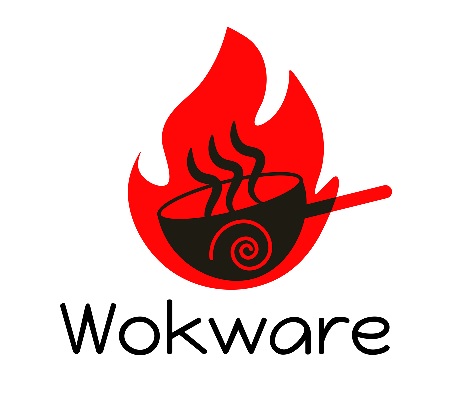Updated on April 2023
is stainless steel wok safe?
Wokware is reader supported. When you buy through links on our site, we may earn an affiliate commission. Learn Here.
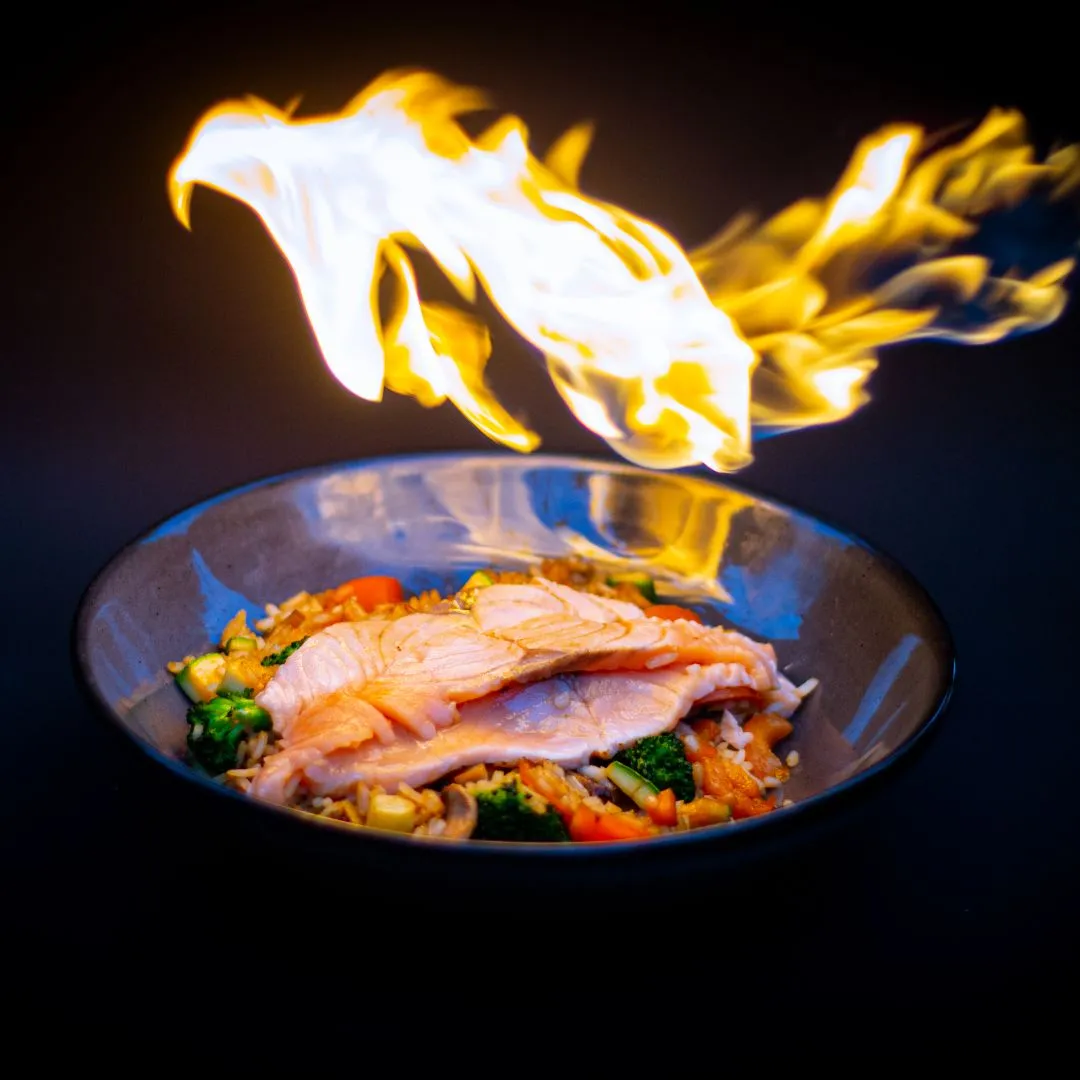
Summary:
Stainless steel wok is safe to use on a daily basis but make sure the grade of the material is food-safe and the manufacturer is a reputed one. The stainless steel woks with advanced etched surface are the healthiest to pick.
Welcome to the world of stainless steel wok pans, where culinary excellence meets exceptional craftsmanship! Wok pans are a staple in many kitchens around the globe, known for their unique shape and versatility in stir-frying, sautéing, searing, and more.
One of the key factors that determine the quality of a stainless steel wok pan is the material used in its construction. High-quality materials ensure durability, superior heat conductivity, and consistent cooking results. But the most crucial part of buying a wok pan is ensuring its safety over high heat.
We're Going to Answer:
- Is stainless steel wok safe?
- Grades of stainless steel wok
- Nonstick advanced etched surface
- Pros of stainless steel wok
- summary
Not All woks are non-toxic
Great woks are non-toxic, food-safe and healthy to use on high heat. Seasoned woks need less oil which make wok cooked food a great fit for health conscious people. But not all material made woks are safe especially the nonstick coated woks must be avoided at any cost.
As wok cooking is a high heat process, after a while the non stick coating if not superior will chip off and mix with your food which definitely is a health hazard.
Is stainless Steel Wok Safe?
Stainless steel is generally considered to be non-toxic and safe for cooking. It is a type of steel alloy that contains chromium, which forms a protective layer on the surface of the stainless steel, making it resistant to corrosion, staining, and rusting. This property of stainless steel makes it a popular choice for cookware, including wok pans.

Best nontoxic Stainless Steel Wok - I use Hexclad Wok for years now (little to no oil)
One of the advantages of stainless steel wok is that it does not react with acidic or alkaline foods, which means it does not release harmful chemicals or toxins into the food during cooking. Stainless steel is also known for its durability, heat resistance, and even heat distribution, making it suitable for various cooking techniques, including high-heat stir-frying in wok pans.
However, it's important to note that the safety of stainless steel cookware also depends on the quality and grade of the stainless steel used. Lower-quality stainless steel may contain trace amounts of other metals, such as nickel or cadmium, which can potentially leach into food in minimal quantities. Therefore, it's recommended to choose high-quality stainless steel cookware from reputable manufacturers to ensure that it meets food-grade standards and is safe for cooking.
Additionally, as with any cookware, proper use and maintenance of stainless steel wok pans are important to ensure their safety. Avoid overheating or excessive heat, as it can cause discoloration or damage to the stainless steel surface. Regular cleaning and proper seasoning can help maintain the integrity of the stainless steel and ensure safe and enjoyable cooking experiences.
Stainless steel grade used in wok safety

Wok pans are typically made from stainless steel that falls within the 300 series, particularly the 304 grade, which is known for its excellent corrosion resistance and durability. The 300 series stainless steel contains chromium, which forms a protective layer on the surface of the steel, making it resistant to rust, staining, and corrosion. This makes it ideal for cookware, including wok pans, as it can withstand the high heat and frequent use associated with stir-frying and other cooking techniques.
Stainless steel of 304 grade is also commonly used in food-grade applications because it is generally considered safe for cooking. It is known for its non-reactive properties, meaning it does not interact with acidic or alkaline foods and does not release harmful chemicals or toxins into the food during cooking.
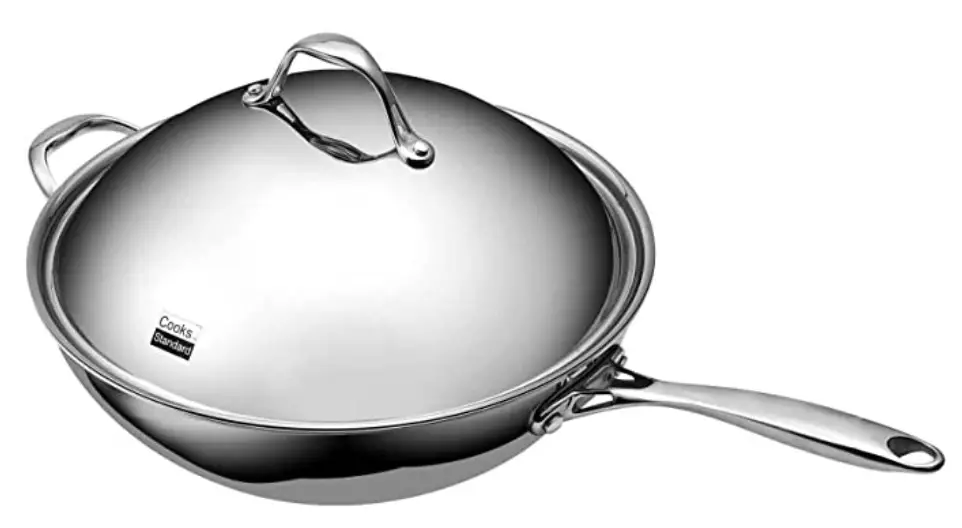
Food-grade Stainless Steel Wok - Cooks Standard
Other grades of stainless steel, such as 316 and 316L, which contain higher levels of nickel and molybdenum, are also used in some high-end wok pans. These grades offer enhanced corrosion resistance and may be preferred in certain specialized culinary applications or for use in more aggressive cooking environments, but they are less common in everyday wok pans.
When selecting a stainless steel wok pan, it's important to look for reputable brands that use high-quality stainless steel, preferably 304 grade or higher, to ensure that the cookware meets food-grade standards and is safe for cooking. Proper use and care of stainless steel wok pans, including avoiding overheating and following manufacturer's instructions, will also help ensure their longevity and safety in the kitchen.
Etched Nonstick Surface Safety on Stainless Steel Woks
The majority of stainless steel woks on the market today have an etched surface that requires less oil to cook food on. Additionally, such etched woks don't require seasoning. What are these etched surfaces, though, and are they secure for daily use?
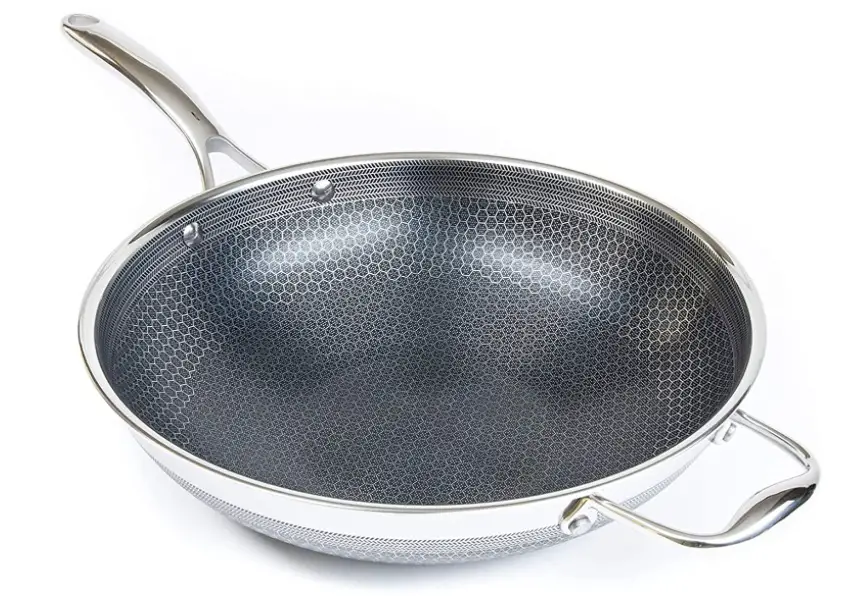
An etched surface in a stainless steel wok refers to a surface that has been treated with a specialized process known as etching. Etching involves using an acidic solution or other chemical agents to create a pattern or texture on the surface of the stainless steel wok. This process can create a matte or roughened surface, which can enhance the non-stick properties of the wok and improve its performance during cooking.
Etched surfaces in stainless steel woks are designed to create small pockets or irregularities on the surface, which can help to trap and hold cooking oils, creating a natural non-stick surface. This can make it easier to cook foods without them sticking to the wok's surface, which is especially beneficial when stir-frying or sautéing ingredients at high heat.
Etched surfaces in stainless steel woks can also improve the wok's ability to conduct and distribute heat evenly across the cooking surface, allowing for more precise temperature control and reducing the likelihood of hot spots. Additionally, the etched surface can provide a better grip for utensils, such as spatulas or stir-fry paddles, making it easier to toss and flip ingredients during cooking.
It's worth noting that not all stainless steel woks have etched surfaces, and some woks may have a smooth or polished surface instead. The decision to use an etched surface or not depends on the manufacturer's design and intended use of the wok. However, for those who prefer a non-stick surface and improved heat distribution in their stainless steel wok, a wok with an etched surface can be a desirable option.
Pros of Stainless Steel Woks

Stainless steel wok pans are widely regarded as safe for cooking due to their non-toxic properties and durability. Here are some reasons why stainless steel wok pans are considered safe to use:
- Non-Reactive: Stainless steel is non-reactive, meaning it does not interact with acidic or alkaline foods during cooking. This prevents the release of harmful chemicals or toxins into the food, making stainless steel wok pans safe for cooking a wide variety of ingredients, including those that are acidic or basic in nature.
- Corrosion Resistance: Stainless steel wok pans, particularly those made from high-quality 304 grade stainless steel, are resistant to rust, staining, and corrosion. This ensures that the cookware remains durable and does not leach any harmful substances into the food during cooking.
- Heat Resistance: Stainless steel is known for its excellent heat resistance, allowing stainless steel wok pans to withstand high temperatures without warping or releasing any harmful fumes. This makes them suitable for various cooking techniques, including high-heat stir-frying.
- Durability: Stainless steel wok pans are known for their durability, which makes them long-lasting and resistant to wear and tear. High-quality stainless steel is less likely to chip, crack, or scratch, ensuring that no harmful particles are released into the food during cooking.
- Easy to Clean: Stainless steel wok pans are typically easy to clean, as they are non-stick and do not require specialized cleaning agents. This helps to prevent the accumulation of harmful residues or chemicals on the cookware's surface.
- Versatility: Stainless steel wok pans are versatile and can be used for a wide range of cooking tasks beyond stir-frying, such as sautéing, searing, boiling, and more. This makes them a practical and safe choice for various cooking needs.
Conclusion:
Overall, stainless steel wok pans are considered safe to use due to their non-reactive nature, corrosion resistance, heat resistance, durability, ease of cleaning, and versatility. As with any cookware, it's important to follow proper use and care instructions to ensure safe and enjoyable cooking experiences.
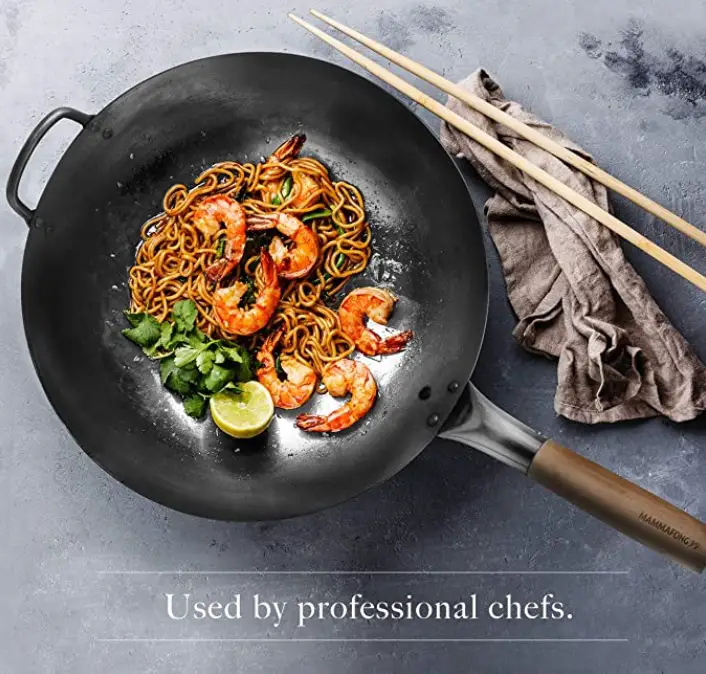
Best Carbon Steel Wok Recommended by Wokware
Mammafong 14 inch Traditional Hand Hammered Round Bottom Carbon Steel Pow Wok Set
Author: Preeunka
Editor at Wokware
She is an expert in the niche of kitchenware for 10 years now. She has given readers fact based, well researched, to the point answers of their valuable questions. Her goal is to simplify kitchen products and their utilities.
